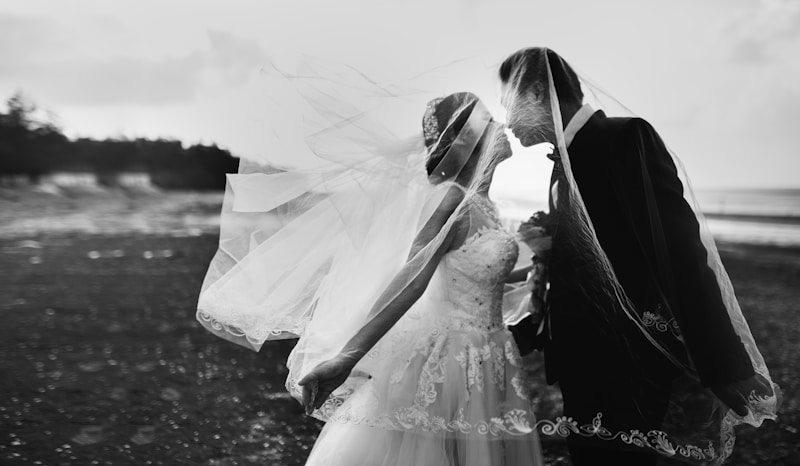Understanding the Flow and Movement of Different Wedding Fabrics: A Guide for Every Bride
Introduction to Wedding Fabrics
When planning a wedding, one of the most important decisions a bride will make is the choice of wedding fabric. The flow and movement of different fabrics can dramatically affect the overall look and feel of the wedding gown. Understanding the various types of fabrics available can help you choose the perfect one that not only complements your style but also enhances your comfort throughout your special day. In this article, we will delve into the characteristics of different wedding fabrics, their movement, and how to choose the best one for your needs.
The Importance of Fabric Choice
Choosing the right fabric for your wedding dress is crucial for several reasons. First, the fabric dictates the silhouette and structure of the gown. Second, it impacts the overall comfort, especially if your wedding lasts for several hours. Lastly, different fabrics produce different vibes, from romantic to modern, making it imperative to select a fabric that aligns with your wedding theme.
Common Wedding Fabrics and Their Characteristics
Wedding fabrics come in various types, each with unique characteristics. Below are some of the most popular fabrics used in wedding gowns, along with their flow and movement:
| Fabric | Characteristics | Movement |
| Satin | Smooth, glossy finish; luxurious feel | Soft drape that enhances elegant movements |
| Tulle | Lightweight, sheer fabric; often layered | Creates volume; stiff movement leading to a fuller silhouette |
| Lace | Intricate patterns; delicate texture | Flexible and romantic; movement can appear graceful and fluid |
| Chiffon | Soft, sheer; slightly stretchy | Flowy and ethereal; moves beautifully with the body |
| Organza | Stiff, crisp texture; sheer appearance | Structured movement; holds shape well |
| Crepe | Smooth, slightly stretchy; soft drape | Fluid and flattering; follows the body's contours |
Understanding Fabric Flow and Movement
What is Fabric Flow?
Fabric flow refers to how a fabric hangs and drapes on the body. The flow of a fabric is determined by its weight, texture, and structure. Heavier fabrics like satin and crepe have a more fluid movement, creating a gentle flow that moves effortlessly with the wearer. In contrast, lighter fabrics like tulle and chiffon can create airy and whimsical shapes, best suited for romantic and ethereal wedding styles.
How Movement Affects Your Wedding Dress
The movement of the fabric is equally important when considering the style of your wedding dress. For instance, fabrics with structured movement, such as organza, are excellent for creating dramatic silhouettes, while softer fabrics like chiffon offer a romantic and whimsical vibe. Understanding how these fabrics move can help you visualize your dress in action, making it easier to determine what will look best as you walk down the aisle.

Choosing the Right Fabric for Your Body Type
Every bride has a unique body type, and certain fabrics can enhance your natural beauty while complementing your shape. Here are some tips on selecting the right fabric based on body type:
1. Hourglass Figures
For hourglass figures, fabrics like satin and crepe can beautifully accentuate curves. Look for dresses that hug your waist and flow gently over your hips to showcase your silhouette.
2. Pear-Shaped Figures
Pear-shaped brides should consider A-line silhouettes made from lightweight fabrics like chiffon or tulle. These materials help to elongate the figure while allowing for graceful movement.
3. Athletic Figures
Athletic brides can opt for structured fabrics like lace and organza, which can add dimension and volume to the body. Look for dresses with embellishments or ruffles to create a softer look.
4. Plus-Size Figures
Plus-size brides should consider fabrics like crepe or heavy satin, which drape well and provide coverage while enhancing shape. Styles with empire waists can also be flattering.
Accessories and Fabric Pairing
When it comes to considering your wedding day look, don't forget about accessories. The type of fabric used for your dress can influence your choice of accessories. For example, a lace gown can pair beautifully with delicate pearl jewelry, while a satin gown may look stunning with bold diamond pieces. Be sure to think about how your accessories will flow with the fabric of your wedding dress as well.
Final Considerations
When choosing a wedding fabric, it's essential to keep in mind the wedding venue, climate, and season. For summer weddings, lighter fabrics like chiffon and tulle are ideal for staying cool, whereas heavier fabrics like satin and velvet are perfect for winter weddings.
Furthermore, pay attention to the colors available. While most brides choose white or ivory, many now explore shades like champagne, blush, and even bold colors. The fabric's color can play a significant role in the wedding gown's overall aesthetic.
Conclusion
In conclusion, understanding the flow and movement of different wedding fabrics is crucial for selecting the perfect gown for your big day. By considering the unique characteristics of each fabric, how they move, and how they can complement your body type and wedding theme, you can make an informed and confident choice. Remember to try on various styles and fabrics to see how they feel and move on your body. Choose a fabric that makes you feel beautiful and comfortable, allowing you to enjoy every moment of your wedding day!
Suggestions: Always schedule dress fittings and consult with your bridal consultant to ensure that you are making the best fabric choices for your body shape and comfort level. Remember, your wedding day is one of the most important days of your life, and your comfort should always come first.